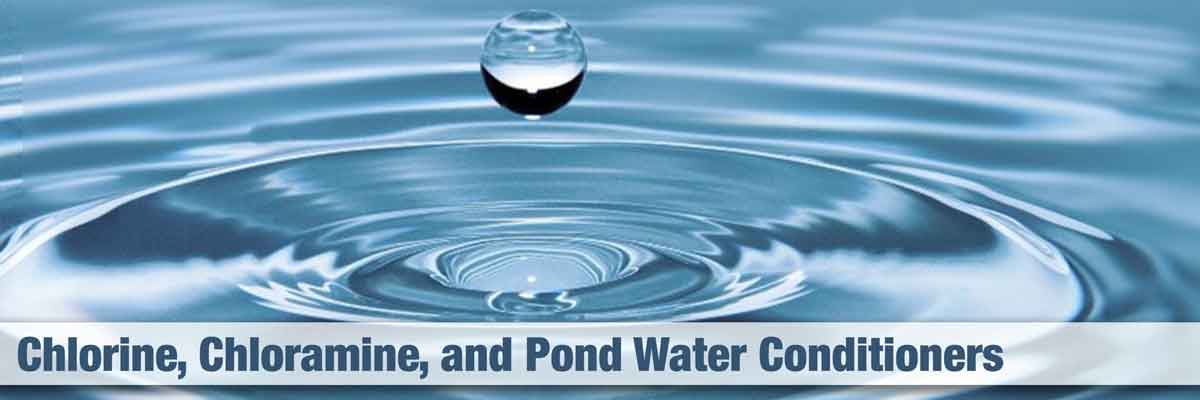Chlorine, Chloramine, and Pond Water Conditioners
As a water gardener I am sure you have heard one or more of these terms over time. But what are they? Below, we define what each are, when to watch out for them, and when to add them.
If you have “city water” running from the tap in your home then it has been treated to be made “safe” for you to drink, cook, and wash with. But since we are discussing water gardening, how safe is the tap water for your pond fish?
Chlorine:
Chlorination is the process of adding chlorine to drinking water to kill parasites, bacteria, and viruses. All in all, this sounds like a good thing… however, putting your fish directly into chlorinated water is detrimental. Only a few short years ago, you could fill up your pond or fish tank with tap water and let it sit over-night. Within 24 hours, the chlorine would evaporate out of the water and it would be safe to add your new finned pets.
You can imagine how costly this process was for the water treatment plant. Keeping your drinking water safe was a constant battle since their purifying agent literally kept going up in the air.
Chloramine:
Soon they discovered that tying an ammonia ion to a chlorine molecule (chloramine) would hold the purifying agent in the water. Ammonia is heavier than water which is what makes it work. The problem for us pond enthusiasts now is, we can’t just let it sit to make it safe.
Heavy Metals:
If you find that you have well water, then heavy metals can be an issue. Copper, iron, lead, cadmium, nickel, and many more can be found in well water. Even in small amounts, these elements can be caustic to your pond fish and cause your ecosystem to crash.
In this instance, use a water conditioner that will detoxify heavy metals. The metals are bound together in the water and removed through the filters over time. Good aeration and water circulation are essential for a healthy pond.
Pond Water Conditioners:
There are several different types of water conditioners on the market now a days. So, make sure you are getting the proper one for your application. “City water” needs to be conditioned according to which treatment process is being used in your area. You can contact your municipality to find out if your tap water is being treated with chlorine or chloramine.
If chloramines are being used, be sure that the water conditioner you choose will break the bond between the ammonia and chlorine and will detoxify the ammonia. Too much ammonia built up in the bottom of your pond can cause string algae problems, or even burn your fish’s gills like smoke from a house fire can burn your lungs.
Some water conditioners may also have aloe or some other de-stressing agent for your fish in them. This, of course, is never a bad idea. Pond salt will also support the protective immune coating that makes your fish feel slimy but keeps them healthy. Add one cup of granulated pond salt for every one hundred gallons of water for good measure.
*Always be sure to follow the instructions on the water treatment you are using to make sure you are using the right dosage.
When to Add and How Much:
Your pond water only needs to be treated with a water conditioner when new water is being added. That could mean treating the full volume of your pond if you are doing an initial fill, or if you drained your pond empty and cleaned it.

If you do a partial water change or are topping off the pond after a leak or evaporation, then you only need to treat the amount of water that you are adding with a water conditioner. For example, if you have a pond that holds approximately 1,000 gallons and you do a 10% water change, then you are only adding about 100 gallons of new water. You would only need to add enough water conditioner to treat 100 gallons.
*Follow the recommendations for proper dosage on your products bottle.
Small actions make a big impact in a small pond. So, this is one area that you will want to pay close attention to. Keep your koi and other pond fish safe and happy with proper water treatments, water conditioners, and understanding the ecosystem you have created.
For more detailed information, check out these related blog articles:
